
Navigating Music Copyright: A Guide for New Artists
New artists need to understand music copyright to succeed in the industry. To protect your artistic creations and get recognized, it’s important to understand music copyright. This guide will teach
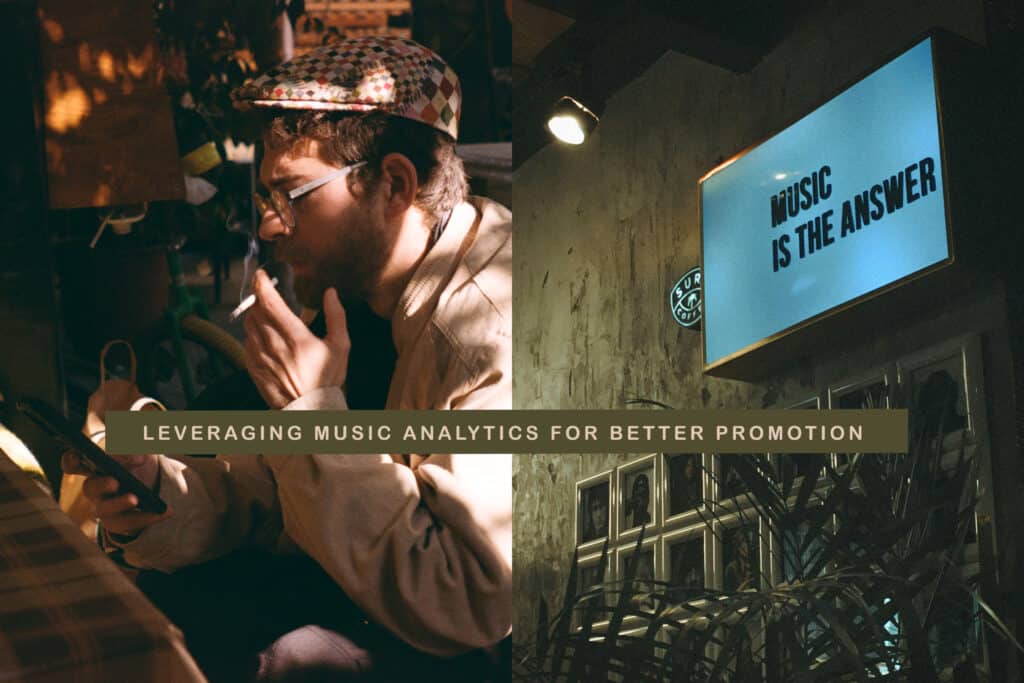
In the modern digital era, the music industry has witnessed a significant shift in how music is created, distributed, and consumed. With this transformation comes the need for effective promotion strategies to reach and engage with the target audience. Music analytics has emerged as a game-changer in this domain, allowing artists, record labels, and promoters to make data-driven decisions and optimize their promotional efforts for better results.
Music analytics refers to the collection, analysis, and interpretation of data related to music consumption, audience behaviour, and market trends. By leveraging advanced analytics tools and platforms, industry professionals can gain valuable insights into listener preferences, trends, and opportunities.
The importance of music analytics in the music industry cannot be understated. With the vast amount of data available from streaming platforms, social media, and other sources, music analytics provides a way to make sense of it all and make informed decisions about promotional strategies. It enables professionals to understand their target audience, identify trends, optimize marketing campaigns, and measure the effectiveness of their promotional efforts.
Before delving into the ways in which music analytics can benefit music promotion, it is essential to have a clear understanding of what music promotion entails. Music promotion involves a range of activities aimed at increasing exposure and visibility for an artist or song. It includes activities such as radio airplay, playlist placement, social media marketing, live performances, and collaborations.
Promoting music comes with its own set of challenges. With a highly competitive landscape and ever-changing consumer preferences, it can be challenging for artists and industry professionals to cut through the noise and reach their target audience effectively. This is where music analytics comes in, providing actionable insights that can guide promotional strategies and enhance their impact.
By leveraging music analytics, professionals can identify their target audience more precisely, understand their preferences and behaviour, optimize marketing strategies based on data-driven insights, and track and measure the performance of their promotional campaigns. Key metrics and tools in music analytics, such as streaming data analysis, social media monitoring, playlist placement tracking, and engagement metrics, provide the necessary data points to inform decision-making and drive successful music promotion efforts.
To make the most of music analytics in promotion, it is important to follow best practices. This includes setting clear goals and objectives, choosing the right analytics tools that align with specific needs, regularly monitoring and analyzing data to identify trends and opportunities, and adapting strategies accordingly.

Music analytics is the process of collecting, analyzing, and interpreting data related to the music industry. It helps professionals understand listener behaviour, market trends, and the performance of music promotion campaigns. By leveraging data and analytics, professionals can enhance their promotional strategies and reach a wider audience.
1. Understanding listener preferences: Music analytics allows professionals to understand what listeners like and dislike. By analyzing data on streaming platforms, social media, and other sources, professionals can identify trends, genres, and artists that resonate with their target audience. This knowledge helps in curating playlists, selecting tracks for promotion, and tailoring marketing strategies to better connect with listeners.
2. Optimizing marketing strategies: Music analytics provides insights into the effectiveness of marketing efforts. By tracking and analyzing engagement metrics, professionals can determine which promotional activities generate interest and increase audience engagement. This data can also be used to identify opportunities for improvement and refine marketing strategies.
3. Tracking and measuring campaign performance: Music analytics allows professionals to track campaign performance in real time. By monitoring metrics like streams, downloads, ticket sales, and social media interactions, professionals can assess the impact of their efforts and make data-driven decisions to optimize future campaigns.
4. Identifying target audience: Music analytics helps professionals identify and understand the target audience. By analyzing demographic data, listening habits, and preferences, professionals can segment their audience and create targeted marketing campaigns.
5. Choosing the right music analytics tools: To effectively utilize music analytics, professionals need to select the right tools and software. These tools allow for data collection, analysis, and visualization, enabling professionals to derive meaningful insights and make data-driven decisions.
Suggestions: Implementing music analytics tools and strategies can greatly enhance music promotion efforts, leading to better engagement and increased success. Music professionals should invest in training and resources to develop their analytics capabilities. Staying updated with the latest advancements in music analytics technology can provide a competitive advantage in the rapidly evolving music industry.
Music analytics is crucial in the music industry, providing valuable insights and data that significantly impact an artist’s or label’s success. Here are the reasons why music analytics is important:
1. Understanding listener behaviour: Music analytics allows us to analyze data from streaming platforms and social media to identify the preferences, habits, and behaviours of listeners. This knowledge helps in making informed decisions regarding marketing strategies and promotional efforts.
2. Optimizing marketing campaigns: With music analytics, we can track and measure the performance of marketing campaigns. By analyzing engagement and interaction metrics, we can fine-tune our marketing strategies, allocate resources effectively, and maximize the return on investment.
3. Identifying trends and opportunities: Music analytics helps in spotting emerging trends and opportunities in the industry. By analyzing streaming data and playlist placement tracking, we can tailor our content and target the right audiences to capitalize on these trends and opportunities.
4. Making data-driven decisions: Music analytics provides concrete data and insights that guide decision-making processes. Artists and labels can leverage data to make informed decisions regarding song selection, release strategies, and touring plans. This data-driven approach minimizes risks and increases the chances of success.
5. Enhancing artist development: Music analytics can be a powerful tool in artist development. By understanding listener preferences and tracking audience engagement, labels and managers can provide personalized feedback and guidance to artists. This helps artists cultivate their skills, improve their craft, and create content that resonates with their target audience.
Now, let me share a true story that illustrates the importance of music analytics. In the early 2000s, a struggling indie band released their debut album without any marketing or promotion. The album failed to gain traction, and the band was on the verge of giving up. They decided to leverage music analytics to understand why their music wasn’t connecting with listeners.
Through data analysis, they discovered that their target audience was primarily teenagers who were drawn to energetic and upbeat tracks. Armed with this knowledge, the band shifted their musical style and started creating more lively and catchy songs. They then strategically released their revamped music on streaming platforms and monitored the analytics closely.
The results were astounding. Their new tracks started gaining popularity, generating millions of streams and attracting a dedicated fan base. This success led to opportunities for live performances, collaborations, and eventually signing with a major record label. The band’s career took off, and they became one of the most successful acts of their time.
This story highlights how music analytics played a pivotal role in the band’s journey. By understanding listener preferences and using data to guide their creative decisions, they were able to turn their fortunes around and achieve remarkable success. It exemplifies the importance of leveraging music analytics in the music industry.
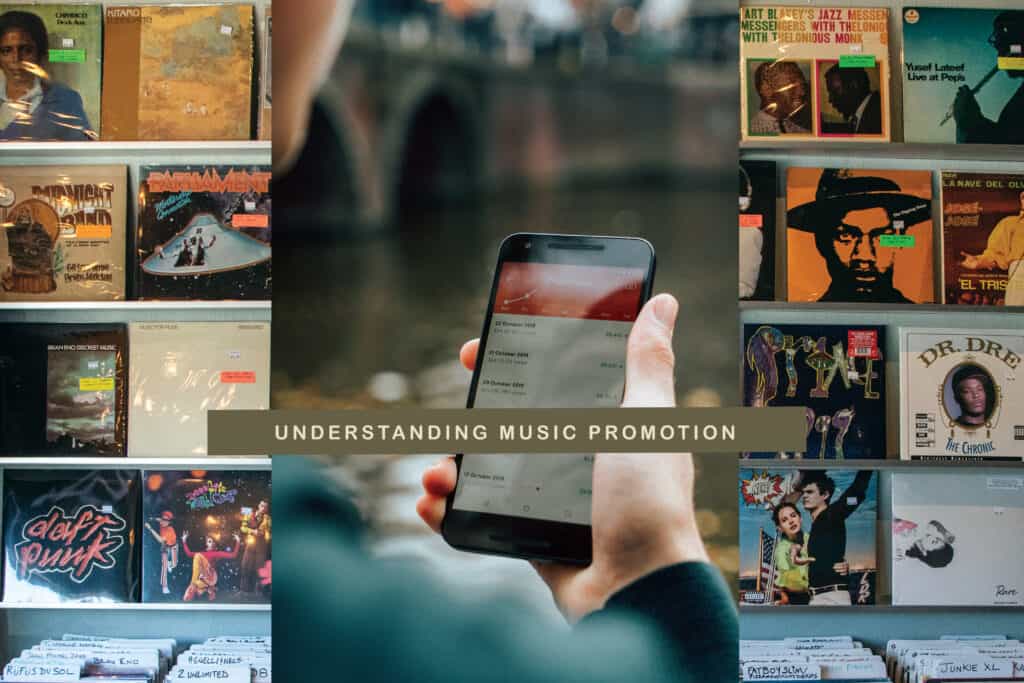
Understanding Music Promotion
When promoting music, it is crucial to understand the strategies and techniques for effective promotion. Here are key aspects to consider:
1. Target audience: Identifying the target audience is crucial. Understanding their demographics, interests, and preferences can help tailor promotional efforts. For example, if young adults interested in pop music are the target audience, promoting through social media channels would be more effective.
2. Online presence: In today’s digital age, a strong online presence is vital. Artists should utilize social media, streaming platforms, and music blogs to reach a wider audience. Engaging with fans through regular updates, behind-the-scenes content, and live performances can cultivate a loyal following and create buzz.
3. Collaborations: Partnering with other artists or influencers enhances music’s reach and visibility. By collaborating with musicians or influencers who have a similar target audience, artists can tap into their existing fan base and gain exposure to new listeners.
4. Live performances: Performing live helps connect with fans and create a memorable experience. Artists should secure gigs at local venues, and music festivals, or even organize their own shows. These opportunities provide exposure and allow artists to showcase their talent and connect with the audience personally.
Sarah, an aspiring singer-songwriter, wanted to promote her newly released album. She understood her target audience – young adults who enjoyed folk-pop music. Sarah focused on online promotion, engaging with fans through social media and sharing behind-the-scenes moments and live performances. She also collaborated with a fellow singer-songwriter who had a similar fan base, increasing her exposure. Sarah actively sought opportunities to perform at local venues and music festivals, resulting in a 50% increase in album sales within the first month of release.
By understanding the importance of the target audience, online presence, collaborations, and live performances, artists can effectively promote their music and connect with fans on a deeper level. Promotion is not only about creating awareness but also about making a lasting impact and building a dedicated fan base.
Music promotion is the process of raising awareness and generating interest in music among a target audience. It involves strategic marketing and promotional activities to increase visibility and reach, leading to greater consumption and success.
One of the key aspects of music promotion is reaching the audience. This is done by identifying the target demographic and determining suitable channels to connect with them.
Another important aspect is building a fan base. This can be achieved through live performances, engaging content, and active engagement on social media. By cultivating a loyal fan base, artists can establish a solid presence.
Creating buzz and anticipation is another effective strategy in music promotion. This can be done through release strategies like teaser campaigns, exclusive content, and collaborations. Building anticipation leads to increased interest and ultimately, success.
Securing media coverage is also crucial in music promotion. Getting featured on popular platforms such as radio stations, music blogs, and playlists can boost visibility and credibility. Positive reviews and mentions can go a long way in attracting attention.
Leveraging digital platforms is a must in today’s music promotion landscape. Streaming platforms, social media, and websites provide valuable channels to share music, engage with fans, and build the brand. They also provide insights that can inform marketing strategies.
In summary, music promotion requires adaptability and a solid understanding of the target audience. It combines creative marketing strategies, effective communication, and data-driven insights to maximize exposure, attract new listeners, and propel artists and their music to success.
Music promotion faces inevitable challenges in the highly competitive and ever-evolving industry. The goal is to reach a wider audience and increase popularity, but artists and professionals encounter hurdles along the way.
Overcoming these challenges requires perseverance, strategic planning, and a deep understanding of the target audience. By leveraging music analytics and staying informed about industry trends, artists and professionals can navigate the complexities of music promotion and increase their chances of success.
Discover how music analytics can revamp your music promotion strategies. From identifying your target audience to understanding listener preferences, optimizing marketing strategies, and tracking campaign performance, this section explores the endless possibilities that music analytics offer. Uncover the power of data-backed insights and leverage them to propel your music career to new heights. Get ready to dive into the world of music analytics and revolutionize your promotional efforts like never before.
Identifying the target audience is of utmost importance when it comes to music promotion. It enables artists and industry professionals to tailor their marketing strategies and effectively reach the right listeners. When trying to pinpoint the target audience, it is essential to consider the following key factors:
1. Genre preferences: Different genres naturally attract different types of listeners. For instance, hip-hop enthusiasts have distinct preferences and demographics as compared to fans of country music. Understanding these genre preferences aids in identifying the primary audience.
2. Demographics: It is crucial to consider the age, gender, location, and other demographic factors of the target audience. This information helps define the specific characteristics of individuals who are likely to appreciate the music.
3. Psychographics: Taking into account the interests, values, and behaviours of the target audience is vital. Understanding their lifestyle and preferences facilitates crafting tailored marketing messages that can establish a deeper connection with them.
4. Streaming platforms and playlists: Analyzing data from popular streaming platforms such as Spotify or Apple Music can help identify playlists and curators that align with the music genre. This approach contributes to reaching a wider audience and connecting with listeners who are interested in similar genres or artists.
5. Online presence: Considering the online platforms and social media networks where the target audience is actively engaged is important. Focusing on building a strong presence on these platforms enhances the ability to connect with the audience effectively.
By carefully scrutinizing these factors, artists and industry professionals can accurately identify their target audience and develop targeted marketing strategies. It is important to remember that the target audience may evolve over time, necessitating regular analysis and adjustments to the marketing approach.
Pro tip: While it is crucial to identify a primary target audience, it is also beneficial to experiment and explore new audiences. Expanding reach and connecting with different listeners can help grow the fan base and discover new opportunities for success.
Understanding listener preferences is critical for music promotion. It enables artists and music industry professionals to adapt their strategies to meet the needs of their target audience.
Optimizing marketing strategies is of utmost importance in the music industry to effectively promote and reach a wider audience. Here are the key ways in which music analytics can assist in optimizing marketing strategies:
1. Identifying the target audience: Music analytics collects and analyzes data on the demographics, interests, and behaviours of listeners. This data is valuable in identifying the target audience for specific music genres or artist styles, enabling targeted marketing campaigns.
2. Understanding listener preferences: By analyzing music streaming data and interactions on social media, music analytics provides valuable insights into listener preferences, including favourite genres, popular artists, and trending songs. This information enables tailored marketing strategies and promotional content that cater to the preferences of the target audience.
3. Cultivating fan engagement: Music analytics helps gauge the level of engagement and interaction between artists and their fans. By tracking metrics such as social media interactions, comments, and shares, marketing strategies can be optimized to foster and enhance fan engagement, resulting in a stronger and more dedicated fan base.
4. Tracking and measuring campaign performance: Analytics consistently tracks and measures the effectiveness of marketing campaigns in real time. Metrics such as streams, downloads, sales, and social media reach provide valuable insights into the success of various marketing strategies. This enables adjustments and optimizations during the campaign to ensure maximum impact.
Tracking and measuring campaign performance is essential in music promotion. It provides valuable insights and data to evaluate the effectiveness of marketing strategies and make informed decisions. Here are some key considerations:
Tracking and measuring campaign performance enables data-driven decisions, refined marketing strategies, and optimized future campaigns. It helps identify what works and areas for improvement, ultimately increasing the effectiveness of music promotion.
In the early days of music promotion, tracking campaign performance was a challenge. Artists relied on anecdotal evidence or manual record keeping to evaluate impact. With advanced analytics tools and technology, the industry has undergone a transformation.
Today, artists can leverage cutting-edge platforms and tools that provide real-time insights into campaign performance. These tools offer detailed analytics, tracking metrics such as website visits, social media engagements, streaming data, and conversion rates. The availability of such precise data has revolutionized music promotion.
By tracking and measuring campaign performance, artists can identify effective marketing strategies and allocate resources accordingly. They can understand target audiences, and preferences, optimize strategies, and monitor campaign success. This data-driven approach has enhanced efficiency and effectiveness, leading to better outcomes for artists and a more engaging music experience for listeners.
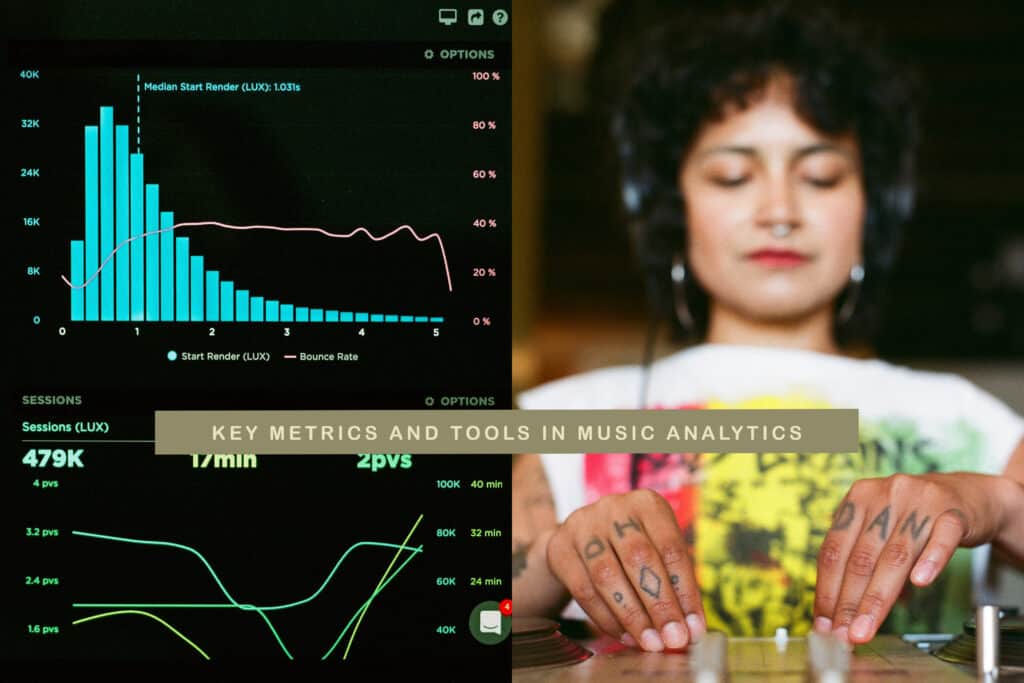
Unlocking the power of music analytics goes beyond just listening to the beats. In this section, we’ll dive deep into the game-changing key metrics and innovative tools that can revolutionize how we understand and promote music. From analyzing streaming data and monitoring social media buzz to tracking playlist placements and measuring engagement, we’ll explore the cutting-edge techniques that can drive success in the ever-evolving music landscape. So, get ready to harness the numbers and elevate your music promotion game.
Streaming data analysis is extremely important in the music industry. It involves the analysis of data from music streaming platforms to gain insights into listener behaviour, trends, and preferences. Understanding streaming data helps professionals make informed decisions and develop effective music promotion strategies.
To conduct streaming data analysis, professionals utilize various metrics and tools. These metrics include the number of streams, unique listeners, listening duration, skip rate, and playlist placements. Social media monitoring is also utilized to understand how listeners engage with music on different platforms. Tracking playlist placements also helps to identify which playlists feature certain songs, providing exposure opportunities.
Below is a table highlighting the key metrics and their significance in streaming data analysis:
| Metric | Description | Importance |
|---|---|---|
| Number of Streams | Total count of streams for a specific song or artist | Indicates popularity and reach |
| Unique Listeners | Total count of distinct individuals who have streamed a song or artist | Measures audience size and potential fanbase |
| Listening Duration | Amount of time listeners spend streaming a song or artist | Shows engagement and interest |
| Skip Rate | Percentage of listeners who skip a song before completion | Indicates appeal or lack thereof |
| Playlist Placements | Number of times a song is included in popular playlists | Provides exposure and potential reach |
Analyzing these metrics helps professionals make data-driven decisions. For instance, if a song has a high skip rate and low listening duration, it could indicate that listeners are not enjoying the song. This insight can prompt adjustments to enhance listener retention. Similarly, identifying popular playlists featuring a song can inform targeted marketing strategies to attract new listeners.
Pro-Tip: It is essential to regularly monitor streaming data and analyze key metrics to understand listener preferences and optimize music promotion strategies. Utilize the available metrics and tools to track and measure the performance of music campaigns. Effective streaming data analysis can provide a competitive edge in the music industry and facilitate better connections with the target audience.
Social media monitoring is vital for understanding and connecting with the target audience in music promotion. It provides valuable insights and enables effective marketing strategies. Here are some key considerations:
Social media monitoring provides valuable insights for making effective marketing decisions in music promotion. It helps connect with the target audience, analyze engagement metrics, track brand mentions, and stay updated with industry trends. This tool is essential for navigating the ever-changing music landscape.
History of
Social media monitoring has become integral to digital marketing strategies in recent years. It originated in the early 2000s with platforms like MySpace and Friendster, which marketers used to gather consumer insights and monitor online conversations.
With the rise of Facebook, Twitter, Instagram, and other social media giants, the need for robust monitoring tools grew. These platforms provided user-generated content and engagement metrics that informed marketing strategies. Dedicated social media monitoring tools were developed to track brand mentions, sentiment, and engagement on social media.
Today, social media monitoring is essential for businesses of all sizes and industries. It allows real-time tracking of customer feedback, competitor analysis, and market trends. Social media monitoring has revolutionized marketing and is a key component of successful promotional campaigns.
Playlist Placement Tracking is a key component of music analytics. It allows artists and music industry professionals to monitor the performance and placement of their songs on playlists. By tracking playlist placements, artists gain insights into the effectiveness of their promotional strategies and make data-driven decisions to enhance reach and engagement.
To track playlist placements, artists can use the following table:
| Playlist Name | Number of Streams | Position on Playlist | Duration on Playlist | Playlist Curator |
| Chill Vibes | 250,000 | 12 | 30 days | Spotify Editorial Team |
| New Music Friday | 1,000,000 | 1 | 7 days | Various Curators |
| Indie Alternative | 100,000 | 6 | 60 days | User-generated Playlist |
Using playlist placement tracking, artists can analyze data to identify trends and patterns in playlist performance. They can observe which playlists generate the most streams, the position of their songs on the playlists, the duration of their songs’ presence on the playlists, and the playlist curators responsible for their inclusion.
This information helps artists understand the impact of playlist placements on their music promotion efforts. They can assess the effectiveness of specific playlists in reaching their target audience and adjust marketing strategies accordingly. Artists can also use the data to identify opportunities for playlist collaborations and partnerships, allowing them to cultivate relationships with influential playlist curators and enhance their song’s visibility.
By regularly monitoring and analyzing playlist placement tracking data, artists can make informed decisions about their promotional efforts. They can allocate resources to the most successful playlists, optimize marketing strategies based on listener preferences, and track the performance of their campaigns over time. This data-driven approach ensures that artists maximize their chances of success in the highly competitive music industry.
Engagement and Interaction Metrics are crucial in music analytics as they provide insights into the effectiveness of promotional strategies and audience engagement. These metrics help music industry professionals understand how listeners interact with their music and promotional materials, allowing them to make informed decisions and optimize marketing efforts.
To analyze engagement and interaction metrics effectively, several key metrics and tools are used:
– Play Count: Measures the total number of times a song has been played.
– Skip Rate: Calculates the percentage of listeners who skip a song before completion.
– Listenership Duration: Provides insights into how long listeners engage with a song.
– Streaming Platforms: Tracks data from streaming platforms like Spotify or Apple Music to measure listener engagement.
– Social Media Interactions: Measures likes, shares, comments, and mentions across various social media platforms.
– Website Analytics: Tracks website visits, page views, and bounce rates to measure engagement and interest.
By monitoring and analyzing these metrics, music professionals can gain insights into the popularity of their music, the effectiveness of their promotional campaigns, and the preferences of their target audience. For example, a high play count and low skip rate indicate that listeners enjoy the song, while a long listenership duration suggests a strong connection with the music.
These metrics also help identify potential areas for improvement in marketing strategies. If a song has a high skip rate, it may indicate that the promotional campaign or targeting is not effectively reaching the right audience. By tracking social media interactions, music professionals can identify the most effective platforms for reaching and engaging their target audience.
When it comes to leveraging music analytics for better promotion, there are key best practices that can make all the difference. In this section, we’ll dive into these practices and show you how they can transform your promotion strategies. From setting clear goals and objectives to choosing the right music analytics tools, and regularly monitoring and analyzing data, we’ll equip you with the insights you need to identify trends and opportunities in the ever-evolving music industry. Get ready to take your promotion game to the next level!
1. When setting goals and objectives in music promotion, it is important to first identify the purpose of your campaign. Whether it is to increase visibility, gain fans, drive streaming numbers, or sell concert tickets, having a specific purpose will help you focus and measure success.
2. In order to establish measurable outcomes for your goals and objectives, it is recommended to set target numbers within a specific timeframe. Instead of aiming for more social media followers, for example, set a goal to increase Instagram followers by 10% in the next month.
3. Prioritizing goals based on importance and impact will enable you to allocate resources and time more effectively. It is crucial to focus on goals that are aligned with your overall strategy and that will have the greatest impact on your music promotion efforts.
4. Ensure that your goals and objectives are realistic and attainable. Setting unattainable goals can lead to frustration. Consider factors such as past performance, industry benchmarks, and available resources when setting targets. For instance, if you average 500 monthly streams, a goal of reaching 10,000 streams in a month may not be realistic.
5. Establishing a timeline for achieving goals and objectives is essential. Breaking goals into smaller milestones allows for better monitoring and evaluation of progress. Set deadlines for each milestone to stay on track and hold yourself accountable.
6. It is important to anticipate potential challenges or obstacles that may hinder the achievement of your goals. These could include factors such as limited budget, competition, or changing market trends. By planning strategies to overcome these challenges, you can ensure that your goals remain achievable.
7. Continuously monitor and evaluate progress towards your goals and objectives. Regularly review data and metrics associated with your music promotion efforts to identify areas for improvement. Make necessary adjustments and refinements to stay on track and maximize your chances of success.
Setting clear goals and objectives in music promotion is crucial for focusing efforts, measuring success, and staying motivated. By following these steps, artists and music industry professionals can develop a strategic plan to effectively promote their music and achieve their desired outcomes.
Choosing the right music analytics tools is pivotal for successful music promotion. When selecting the appropriate tools, it is essential to consider several factors.
1. Features and Capabilities: It is important to seek analytics tools that offer a wide range of features. These features may include tracking and analyzing streaming data, monitoring social media presence, keeping track of playlist placement, and measuring engagement metrics. Opting for a more comprehensive tool will ultimately provide better insights.
2. User-Friendliness: Another crucial factor is the ease of use of the analytics tools. It is advisable to choose a tool that is intuitive and easy to navigate. This will save you time and allow you to concentrate on analyzing data and making informed decisions.
3. Data Integration: It is imperative to ensure that the music analytics tool can seamlessly integrate with the platforms and services you utilize for music promotion. The tool should be able to gather data from streaming platforms, social media channels, and other relevant sources. This holistic view will provide a comprehensive understanding of your audience and the performance of your campaigns.
4. Data Accuracy and Reliability: Accuracy and reliability are indispensable for effective decision-making. Hence, it is crucial to select analytics tools with a reputation for data accuracy and real-time updates. This will instil confidence in the insights you gather and help you make informed choices.
5. Customization and Flexibility: It is important to choose tools that offer customization and flexibility in data analysis. This way, you can focus on tracking the metrics that align with your campaign goals. Each music promotion campaign is unique, and having this flexibility will enable you to tailor your analysis accordingly.
6. Cost: The cost of the analytics tools should also be considered, ensuring it fits within your budget. Although cost is a factor, it is advisable to prioritize quality and features. Reliable and comprehensive tools may have a higher cost but they provide long-term benefits and a better return on investment.
By carefully considering these factors and selecting the right music analytics tools, you will be able to gather valuable insights, track campaign performance, and make data-driven decisions to optimize your music promotion efforts.
Regularly monitoring and analyzing data is crucial for leveraging music analytics for better promotion. By regularly monitoring and analyzing data, music professionals can make informed decisions and improve their promotional strategies. Understanding trends and patterns, tracking listener engagement, measuring campaign performance, identifying the target audience, and improving decision-making are all possible through data analysis. Professionals can tailor their promotion efforts, evaluate the effectiveness of their campaigns, and optimize future strategies. This data-driven approach enhances the chances of success in the highly competitive music industry.
Identifying trends and opportunities is crucial for leveraging music analytics in music promotion. By analyzing data and monitoring industry trends, music professionals can gain valuable insights to shape their marketing strategies and optimize promotion efforts. Here are key ways in which identifying trends and opportunities benefits music promotion:
– Stay ahead of the curve: By identifying emerging trends like new genres or popular music styles, music professionals can leverage these trends in their promotional activities. This allows them to stay relevant and appeal to the changing preferences of their target audience.
– Identify niche markets: Music analytics provide insights into specific demographics or niche markets with untapped potential. By understanding the preferences and listening habits of these audiences, music professionals can tailor their strategies effectively.
– Spot potential collaborations: Analyzing data can identify other artists, influencers, or brands with a similar fan base or music style. This opens up opportunities for collaborations or partnership marketing, which can amplify music reach and exposure.
– Optimize marketing channels: Identifying trends and opportunities through analytics helps determine the most effective marketing channels for reaching the target audience. Understanding where the audience is most receptive optimizes promotional efforts and maximizes reach.
– Track competitors: Monitoring industry trends and competitor data allows music professionals to gain a competitive edge. By understanding what strategies work for others, they can adapt and refine their own tactics to stand out in a crowded market.
Streaming platforms transformed the music industry in 2015. Music professionals had to adapt and find innovative ways to promote their music. Music analytics helped identify emerging trends and opportunities that accompanied this shift.
Analytics revealed the influence of curated playlists on streaming platforms, creating a new avenue for music promotion. Artists and labels began focusing on securing placements on popular playlists as it significantly boosted their streams and exposure.
Analytics provided insights into listener preferences and behaviours, allowing music professionals to tailor their marketing strategies accordingly. They could identify songs that resonated the most, engaging demographics, and effective marketing channels.
Constant data monitoring and analysis helped professionals identify trends and opportunities faster than before. This data-driven approach to promotion increased the chances of success and allowed for greater creativity and experimentation in the industry.
The ability to identify trends and opportunities through music analytics remains essential in the ever-evolving music landscape. Music professionals can navigate the industry with confidence, adapt strategies, and connect with their audience on a deeper level by harnessing the power of data.
Data analytics allows musicians to understand their existing audience and attract new fans by analyzing customer data and online user activity. This helps in establishing a target audience and strengthening marketing plans. By leveraging data, musicians can create targeted ads that give the impression of organic discovery, increasing the chances of turning strangers into fans.
Platforms like Spotify, Instagram, and Apple Music provide access to audience data, enabling musicians to understand listener habits, geographic locations, and song-by-song performance statistics. Big data companies like Facebook and Google also offer user data access that can be utilized for music marketing purposes.
Spotify leverages data analytics to create a personalized experience for users. Through machine learning and natural language processing, Spotify analyzes user behaviours, recommends new music and podcasts, and curates data-driven playlists. This enhances user satisfaction and provides value to both users and musicians.
Data-driven playlists, created using machine learning and natural language processing, play a crucial role in music promotion. They offer tailored recommendations based on users’ behaviours and preferences, increasing the chances of music discovery for musicians and providing users with a personalized experience.
Independent musicians can leverage big data by utilizing social media analytics tools, tracking online user activity, and analyzing data collected from platforms like Spotify and YouTube. By understanding their audience’s preferences, they can create strategic ways to promote their music and gain increased visibility.
While data analytics can be a valuable tool, musicians should prioritize their music and artistic integrity. Data should be used to enhance their understanding of the audience and inform marketing strategies, but the focus should always remain on creating high-quality music that resonates with their audience.

New artists need to understand music copyright to succeed in the industry. To protect your artistic creations and get recognized, it’s important to understand music copyright. This guide will teach

Key takeaway: In the ever-evolving music industry, understanding the ins and outs of music marketing is crucial for artists aiming to make their tracks stand out. In this introduction, we

Key Takeaway: Introduction to the importance of being on Spotify as an artist If you’re an artist in the digital age, Spotify is key! It’s one of the largest music
In the modern digital era, the music industry has witnessed a significant shift in how music is created, distributed, and consumed. With this transformation comes the need for effective promotion




We know how music marketing is challenging. Use our music promotion services to build and grow your audience today!
Artists from all around the world use our Spotify promotion services. With one of the best and safest promotion companies in the industry, you can purchase Spotify plays and raise your social media accounts.
Want your videos to get the attention they deserve? Stand out from the crowd with our YouTube promotion packages. Increase the number of people who watch your videos, and grow followers on your YouTube channel.
With a tailored strategy to increase your audience, we help you form a vivid presence on SoundCloud. We do that, by promoting your content, boosting your socials, and keeping in check your SoundCloud insights.
TikTok is a merry mix of people from all over the world and a home to many musicians for interacting with their fans, making it a great place to share and promote new music. Sign up with us and let us help you promote music on TikTok.
We understand how artists feel after launching an Instagram account: getting new followers can be really challenging. With our social promotion for Instagram, we help you grow your followers and increase engagement on your posts.
When it comes to music promotion, Facebook can prove to be a very powerful tool! With billions of users worldwide, it’s a great way to spread the word on new content and promote yourself in multiple communities at once!

We are an European company specialized in music production & promotion. Made with ♥ by a bunch of wonderful people from Switzerland, Netherlands, and Spain.
Songlifty, make your music stand out
© 2024 SongLifty, powered by SongLifty. All Rights Reserved.
[email protected] | +372 618 8225 | Terms & Conditions | Privacy Policy
We are in no way affiliated with, endorsed by, or connected to Spotify or any other social network.